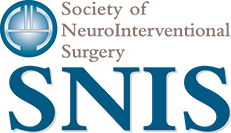
Jennifer Roma’s teenage daughter knew something was wrong with her mom. Neither of them suspected a stroke.
It was 7:30 a.m. and the daily routine was in full swing for the Roma family. Jennifer — the mother of five — was driving her daughter to school when she began having trouble operating the manual transmission car. She became very confused when she kept stalling the car in the school driveway. Then she couldn’t speak.
Her daughter realized something wasn’t right and phoned her father for help.
“The furthest thing from my mind was that Jennifer was having a stroke,” says her husband, Tony. “When I arrived, I saw her face was drooping. She had lost mobility on her left side. I called 9-1-1.”
The first responder confirmed the signs of stroke. They called ahead to the Beaumont Hospital-Royal Oak in the hope of saving time.
Once Jennifer arrived, the doctors and nurses knew exactly what to do. Before she was even admitted, they wheeled her straight to the CT scanner. They administered a drug to dissolve the blood clot, but realized it wasn’t working. Jennifer needed neuroendovascular stroke surgery — a life-saving procedure that uses a catheter to remove the blood clot from her brain.
Jennifer survived, but experiences aphasia — the loss of the ability to understand or express speech, caused by brain damage. She spent a year in physical therapy learning how to do basic things, including controlling her speech.
“It was important to me that the kids realize that I’m just fine,” says Jennifer. “I don’t want them to be scared because of what I’m saying … if it doesn’t make sense. It was well worth it to go to speech.”
 For Tony, watching Jennifer work so hard to reclaim her speech has been an incredible journey and learning experience. An engineer, he has learned a lot about how the brain works, as well as the human spirit.
For Tony, watching Jennifer work so hard to reclaim her speech has been an incredible journey and learning experience. An engineer, he has learned a lot about how the brain works, as well as the human spirit.
“It’s amazing how much you can recover. I didn’t expect it. It’s been a pleasant surprise,” he says. “People say to us all the time that Jennifer is ‘back to normal’. Whatever she has been able to do, she has worked her butt off for.”
Together, Jennifer and Tony feel very lucky — that they had access to appropriate care and were able to get it in time. But they are concerned that it is quite rare for other people to have this “absolute success story.”
“It’s just amazing what we don’t do right about this,” says Tony. “There’s a lot of work left to do. The technology is out there.”





